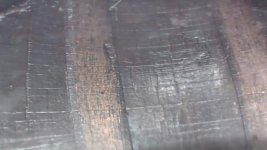FrankenMauser
New member
The blow-by with the Hornady cases is likely due as much to being excessively hard, as anything else. If you have fired and resized the claimed dozen times, those necks are going to be work hardened pretty badly.
Try annealing.
As for the bore, it looks like a rough bore from a mid-grade manufacturer, in need of some cleaning. More what I would expect from ER Shaw, than Shaw.
There appears to be some erosion, but not a terrible amount.
Try to get a video, next time you want a borescope analysis. It is much easier to interpret how the condition progresses in video, than with still images.
Try annealing.
As for the bore, it looks like a rough bore from a mid-grade manufacturer, in need of some cleaning. More what I would expect from ER Shaw, than Shaw.
There appears to be some erosion, but not a terrible amount.
Try to get a video, next time you want a borescope analysis. It is much easier to interpret how the condition progresses in video, than with still images.

